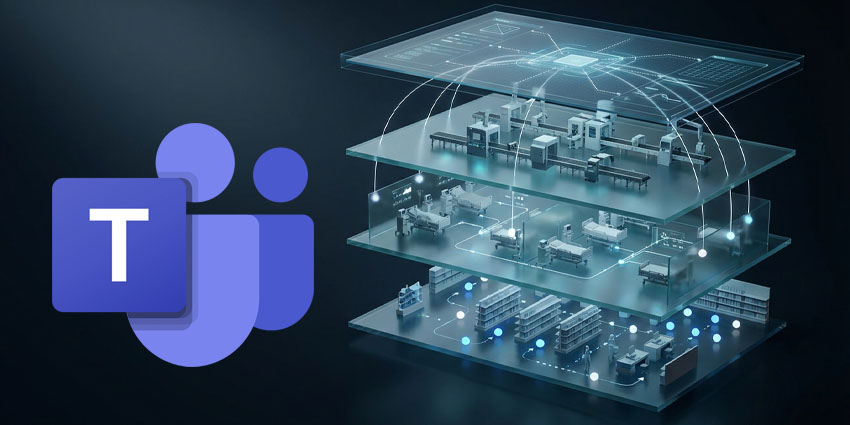Today’s higher education institutions operate in an increasingly competitive world where student expectations have evolved dramatically. Digital natives now demand seamless, multi-channel comms experiences that traditional campus phone systems simply cannot deliver.
Meanwhile, distributed learning environments—accelerated by recent global shifts toward hybrid models—have created prominent communication gaps between students, faculty, and administrators.
Legacy PBX systems remain prevalent across many campuses, creating significant technical debt while offering limited functionality. These outdated systems restrict mobility, lack integration capabilities with modern learning tools, and culminate in frustrating communication silos. For IT leaders managing tight budgets, these ageing systems represent both a financial and operational burden, with maintenance costs increasing while servicing quality declines.
Additionally, many institutions struggle with fragmented comms channels where critical information gets lost between emails, text messages, learning management systems, and department-specific platforms. This communication sprawl not only impacts the student experience but also reduces administrative efficiency and hampers faculty collaboration.
- Big UC Update: SIPPIO
- Campus Connections: How Microsoft Teams Elevates Higher Education Communications
How Enhanced Communications Boosts Student and Faculty Engagement
SIPPIO‘s cloud voice solutions directly address the engagement challenges facing higher education by creating authentically unified communication experiences. Real-world implementations show how this technology transforms student interactions across the educational journey:
At several partner universities, SIPPIO has enabled seamless transitions between communication channels. Students can begin conversations via chatbots on the university portal and seamlessly escalate to voice or video calls with advisors when needed. This omnichannel approach maintains conversation context throughout, eliminating the frustration of students repeating information across different platforms.
For faculty members, the ability to communicate with students through their preferred channels while maintaining work-life boundaries has proven invaluable. One professor at a leading research university reported that SIPPIO’s presence indicators and scheduled availability features helped increase student interaction by 47 percent while actually reducing after-hours disruptions.
Virtual office hours powered by SIPPIO’s video capabilities have shown particularly strong results for commuter campuses and online programs. These institutions report increased participation rates when students can connect from anywhere, with one online program seeing a 62 percent increase in student-faculty consultations after implementing unified communications.
Perhaps most importantly, communication analytics provide valuable insights into student engagement patterns. Early intervention programs using SIPPIO’s communication data have helped identify at-risk students based on declining engagement metrics, allowing advisors to reach out proactively before academic performance suffers.
How Advanced Communications Empowers Faculty and Research Collaboration
Research collaboration represents another area where truly unified communications deliver measurable benefits. SIPPIO’s solutions facilitate seamless collaboration between researchers across different departments, institutions, and even international boundaries.
For multi-institution research projects, SIPPIO’s platform has eliminated traditional barriers by creating persistent virtual research environments where team members can share information, conduct meetings, and maintain continuous communication regardless of physical location. One medical research consortium reports that their project timeline accelerated by approximately 30 percent after implementing these collaborative workspaces.
Faculty members working with industry partners have particularly benefited from secure external communication channels. SIPPIO’s compliance features ensure that sensitive research data remains protected while still enabling productive collaboration with private sector partners—a critical requirement for grant-funded research with commercial applications.
Department chairs and research administrators gain valuable productivity through simplified meeting management and automated workflows. Calendar integration, one-click joining for video conferences, and integrated file sharing eliminates the administrative overhead that previously consumed valuable research time. As one department chair noted, “The time saved on communication logistics alone has allowed our faculty to focus more energy on actual research activities.”
For institutions with global research initiatives, SIPPIO’s global voice capabilities ensure reliable, high-quality communication with international partners without the prohibitive costs of traditional international calling. This has opened new collaborative opportunities with emerging research centers worldwide, particularly in regions where internet connectivity may be limited but voice communication remains reliable.
- Microsoft Teams vs. Zoom: Breaking Down the Opportunities for UC Service Providers
- Unlocking Strategic Wins for UC Resellers and Service Providers
How AI-Powered Comms is Boosting Higher Ed Institutions
Perhaps the most transformative aspect of SIPPIO’s platform comes through its AI-powered capabilities. These intelligent features are creating measurable efficiency improvements across higher education operations:
Administrative teams have reported significant workload reductions through AI-powered virtual assistants that handle routine inquiries. One registrar’s office documented a 73 percent decrease in routine phone calls after implementing an AI assistant that could answer common questions about registration deadlines, transcript requests, and financial aid status.
For IT helpdesks chronically understaffed at many institutions, SIPPIO’s AI capabilities provide 24/7 tier-one support for common technical issues. This ensures students and faculty receive immediate assistance even outside business hours, with one campus reporting a 68 percent first-contact resolution rate for tech support via their AI assistant.
Faculty members benefit from AI-powered transcription and translation features that automatically generate multilingual captions for recorded lectures. This accessibility enhancement serves international students while also supporting learners with disabilities, with the added benefit of creating searchable archives of lecture content.
Perhaps most impressively, predictive analytics built into these communication platforms help institutions optimize resource allocation. By analyzing communication patterns, institutions can identify peak demand periods for various services, allowing more efficient staffing and resource deployment. One financial aid office reported a 42 percent reduction in wait times during peak registration periods after implementing AI-powered workforce management.
Conclusion: The Strategic Advantage of Modern Communications
For higher education institutions facing enrollment challenges, budget constraints, and increasing competition, unified communications represents more than a tech upgrade—it delivers a genuinely strategic advantage. SIPPIO’s cloud voice solutions create measurable improvements in student satisfaction, faculty productivity, and admin efficiency.
Forward-thinking IT leaders in higher education recognize that modern communications infrastructure supports their institution’s core mission by removing barriers to learning, facilitating knowledge creation, and creating more responsive administrative services. By consolidating communications into a unified platform, these institutions are simultaneously reducing the total cost of ownership while expanding capabilities.
As higher education continues evolving toward more flexible, student-centered models, communication technology will play an increasingly central role in institutional success. Today, the institutions gaining competitive advantage are those leveraging solutions like SIPPIO to result in seamless, intelligent comms experiences across their entire campus community.







